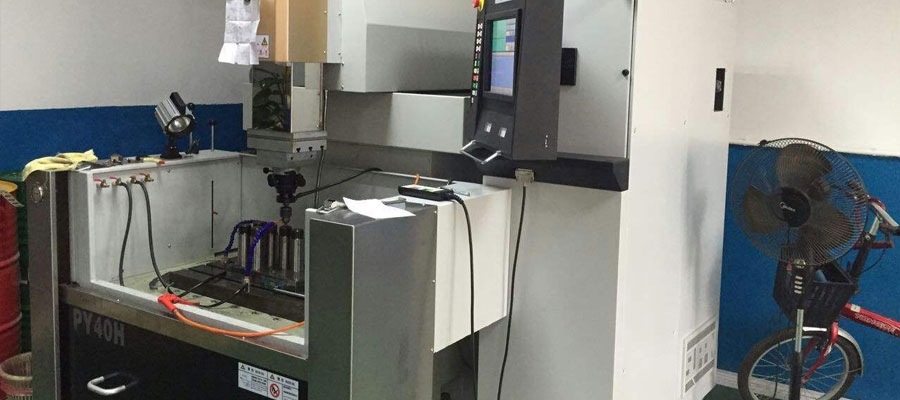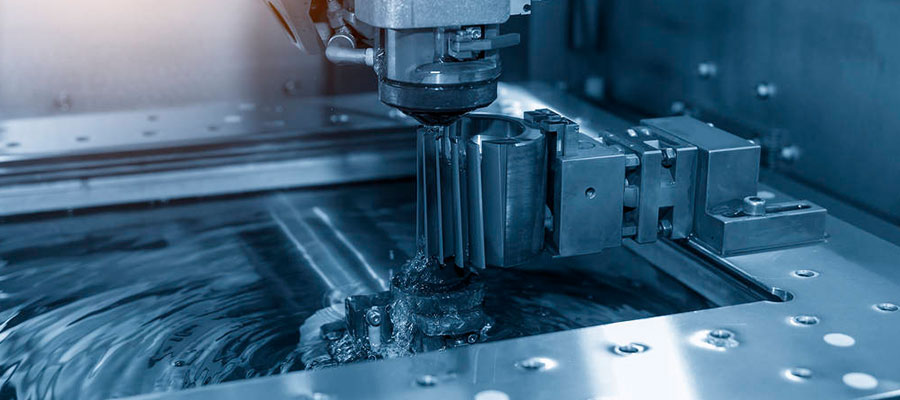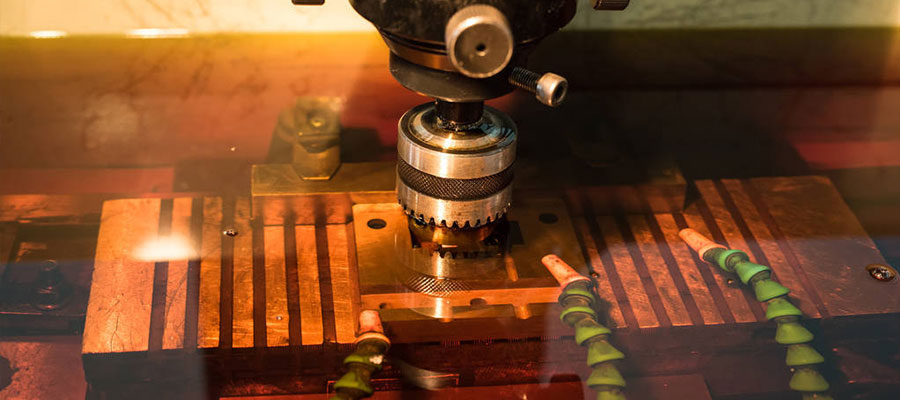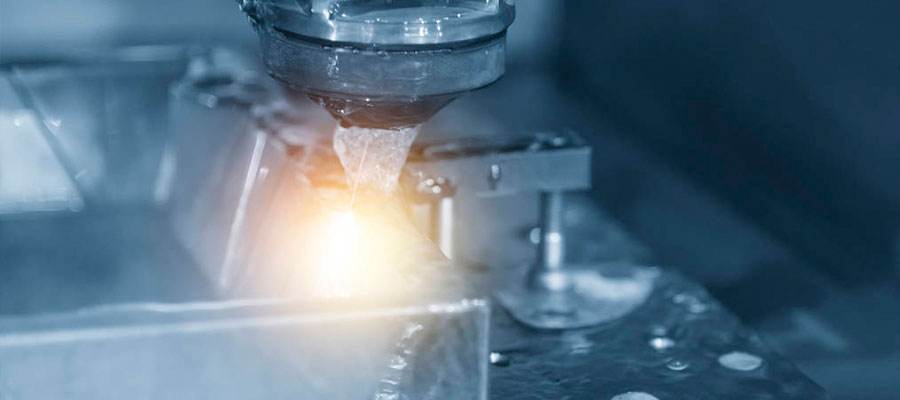What is edm machining?Comparison of EDM and Cnc Milling in mold machining - PTJ Manufacturing Shop
EDM Machining Meaning
EDM,it uses a continuous moving thin wire (called a wire) to perform a pulse spark discharge on the workpiece to remove metal and cut.The emergence of high-speed milling has a great impact on the market of EDM (especially in the processing of large cavity molds), but it still needs a lot of EDM for small, precise and difficult-to-machine molds.

High-speed milling has been popularized and applied for ten years. Just as it was originally expected when it was mysterious, high-speed milling has undoubtedly become an indispensable tool for today's mold processing industry. The EDM technology once dominated by the mold industry has gradually been concealed under the aura of high-speed milling. People are even speculating about the possibility of EDM (Electrical Discharge Machining) exiting the market. However, in terms of the technical level and market demand of the two, this possibility seems to be small.
EDM Machining Characteristics
Mr. Zhou Hanping, CEO of PTJ Cnc Factory: Although EDM has been severely challenged by high-speed milling, some of the inherent characteristics and unique processing methods of EDM technology cannot be completely replaced by high-speed milling. For example, in the complex profile of the mold, deep and narrow small cavities, sharp corners, narrow slits, grooves, deep pits, etc., EDM has its unparalleled advantages. Although high-speed milling can partially meet the above processing requirements, the cost is much higher than EDM. For high-hard materials above 60HRC, EDM is less expensive than high-speed machining HSM. At the same time, EDM is easier to automate than milling. Complex, precision small cavity and micro cavity processing and removal of tool marks and completion of sharp corners, narrow slits, grooves, deep pit processing and pattern processing will be the focus of future EDM applications.
Ms.Michelle ,Business Department of PTJ Cnc Factory: The outstanding advantages of EDM process are: deep cavity precision machining with length to diameter ratio greater than 10; inner corner machining with R less than 0.3mm; workpiece material with hardness greater than HRc55; burrless processing; thin-walled parts; No need for polished mirror finish and uniform aesthetic etched pattern; higher degree of automation and process predictability; easy to process some high toughness aerospace materials such as Inconel, Waspaloy, etc.
However, EDM also has some disadvantages that are currently difficult to overcome, such as relatively long processing time; surface white matter layer/microcracking and the resulting die life problem; workpiece and electrode polishing time is longer; non-conductive materials cannot be processed.
High Speed Milling Can Replace EDM right now?
Any manufacturing technology has its life cycle. High-speed milling and electrical discharge machining are also the same. The premise of survival is continuous innovation, seeking maximum development in their respective fields, and interdependent and complement each other in mold manufacturing.In the current mold production, about one-third of the machining work is still done by EDM machines. High-speed milling has played a leading role in the manufacture of electrodes for electrical sparks, and because of high-speed milling, it can directly mill hardened steel, remove more machining allowance for EDM, and process electrodes and workpieces during electrical discharge machining. The surface is uniformly discharged, the electrode loss is uniform, and the processing efficiency is high, and it has been widely applied and developed in the mold cavity processing. Despite the significant advantages of high-speed milling technology, high-speed milling of three-dimensional curved surfaces results in a non-continuous smooth surface. For molds with high surface quality requirements, EDM is still required for finishing to obtain a smooth machined surface. At the same time, some molds have special requirements on the surface texture, and also need to be completed by an electric discharge machine. For some molds that use special materials or complex cavities, EDM is sometimes the only processing method. Therefore, it can be seen that high-speed milling completely replaces electrical discharge machining is not realistic.
Of course, the advantages of EDM also suffer from market challenges regarding mold quality and delivery time. Improving the surface roughness of EDM and eliminating surface defects are of great significance for expanding the scope of EDM and shortening the manufacturing cycle.
EDM coexists with high speed milling
EDM and high-speed milling will co-exist in a large number of machine shops in the foreseeable future. The trade-off between these two processes is primarily based on factors such as efficiency, cost, accuracy, and die life of a particular machined part.At present, in the mold processing process, EDM and high-speed milling have a part of overlap. For cost and efficiency considerations, quite a lot of workshops use high-speed milling for roughing and part of finishing, high-speed milling with small cutters and cutting. The technological advancement of hard material tools is becoming increasingly popular. This makes EDM more breakthrough in finishing and special processing. For example, connector processing: the market requires that the R angle be as small as possible, and the minimum R angle processed by Makino EDM is less than 10 μm.
As a professional cnc machining service provider, PTJ is currently applying the linear machine tool technology to the field of electric machining. This can be said to be a technological revolution in the field of EDM processing. Compared with the traditional screw drive, the linear motor has the advantages of accurate accuracy and smooth motion. Although the torque output from the linear motor is not as large as the torque generated by the machine, since the electric machining equipment is non-contact type machining and processed by electric discharge, there is no cutting force, and thus the advantages of the linear motor are exerted. The linear motor has accurate positioning, smooth and effective motion, and higher precision of differential compensation. Its servo speed is 5~6 times higher than that of the previous screw.
|
PTJ Machining Capabilities |
|
Automatic Bar Machining – Multi-spindle cam automatic screw machines CNC Turning – CNC delivers peak cost efficiency in shorter volumes, as well as high capacity production of mechanically simple components Custom Machining - with up to 12 axes of control Multi Spindle Machining- ISO 9001:2015 certified Screw Machine Products – The number of customized production parts per hour can reach 10000pcs Swiss Machining – with up to 9 axes of CNC control, to produce precision components with complex geometries in one operation High Volume Machining – 100 Advanced Production Turning Bar Automatics On-line and Ready CNC Milling - Machining Fully compliant with the exacting requirements of our customers 5 axis (11 axis) Machining – Tolerance | 0.1mm alignment |
What Can we help you do next?
∇ Get more information about Cnc Machining Shop
→Case study-Find out what we have done.
→Ralated tips about cnc machining services
By PTJ Manufacturing Shop|Categories: Blog|Tags: cnc milling services, cnc turning services, milling parts, turning parts, machining parts, special parts,faqs,technical news,company news,material news |Comments Off
